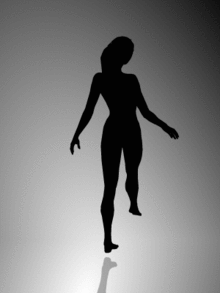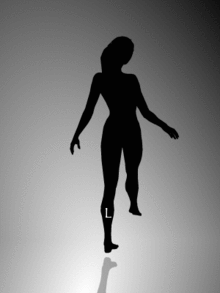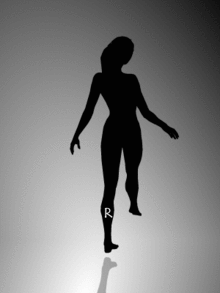當此『順』『逆』之時,有無什麼文字︰
『旋轉女舞者』 The Spinning Dancer 是一個網路上流行的動畫,據聞該動畫的設計者是『茅原伸幸』。如果有人問,我們能夠『分辨』一位女舞者是『順時針』或是『逆時針』旋轉的嗎?這應該是很容易的事情吧!但是假使我們將『空間』中的『立體運動』投影到『平面』上作觀察,你會看到『旋轉女舞者』突然改變『旋轉方向』的嗎?要是這就是人類『視覺』之『所見』,我們身處『柏拉圖』《理想國》之『寓言洞穴』裡,那麼我們的『科學』能不能『發現』這其實是個『幻影』 illusion。得出『真實的』空間確實是『立體的』結論,由於『人類的感官』覺察不到『大自然』的某個『面向』,所以我們才以為『發生』了方向『突變』的啊!!
在『一個宇宙』中,人們從其中取得的『整體知識』,是否會是『一致』的呢?它又為什麼一定『非得』是『一致』的呢?難道一個『不一致』的『大自然』是『不可能』的或是『不可想像』的嗎??從古往今來的『史實』觀之,人類的『思辮能力』的確是『出類拔萃』的了!比方說,西方中世紀的『經院哲學』爭論著『針尖上的天使』這麼個『哲學問題』 ── 因為上帝是『無所不能』,祂為了『傾聽』人類的『心聲 』,於是乎『上帝』的『使者』,『天使 』也就『無處不在』的了。
所以即使『一根針』落下時,都一定會『碰到天使』,……,進而再『申論』了『天使』的『大與小』,那『小者之小 』在『針尖 』上能『立』『成千上萬』個『小天使』── 此『玄論功夫』果真是『匪夷所思』的吧!!
─── 摘自《W!o+ 的《小伶鼬工坊演義》︰ 一窺全豹之系統設計《破繭》》
雖有強大運算能力,卻不知追求什麼目標,此乃小汽車之迷惘也。左看
Anaglyph 3D
Anaglyph 3D is the name given to the stereoscopic 3D effect achieved by means of encoding each eye’s image using filters of different (usually chromatically opposite) colors, typically red and cyan. Anaglyph 3D images contain two differently filtered colored images, one for each eye. When viewed through the “color-coded” “anaglyph glasses”, each of the two images reaches the eye it’s intended for, revealing an integrated stereoscopic image. The visual cortex of the brain fuses this into the perception of a three-dimensional scene or composition.
Anaglyph images have seen a recent resurgence due to the presentation of images and video on the Web, Blu-ray Discs, CDs, and even in print. Low cost paper frames or plastic-framed glasses hold accurate color filters that typically, after 2002, make use of all 3 primary colors. The current norm is red and cyan, with red being used for the left channel. The cheaper filter material used in the monochromatic past dictated red and blue for convenience and cost. There is a material improvement of full color images, with the cyan filter, especially for accurate skin tones.
Video games, theatrical films, and DVDs can be shown in the anaglyph 3D process. Practical images, for science or design, where depth perception is useful, include the presentation of full scale and microscopic stereographic images. Examples from NASA include Mars Rover imaging, and the solar investigation, called STEREO, which uses two orbital vehicles to obtain the 3D images of the sun. Other applications include geological illustrations by the United States Geological Survey, and various online museum objects. A recent application is for stereo imaging of the heart using 3D ultra-sound with plastic red/cyan glasses.
Anaglyph images are much easier to view than either parallel (diverging) or crossed-view pairs stereograms. However, these side-by-side types offer bright and accurate color rendering, not easily achieved with anaglyphs. Recently, cross-view prismatic glasses with adjustable masking have appeared, that offer a wider image on the new HD video and computer monitors. Template:3D Glasses

Stereoscopic effect used in macro photography ![]() 3D red cyan glasses are recommended to view this image correctly.
3D red cyan glasses are recommended to view this image correctly.
Types
Complementary color
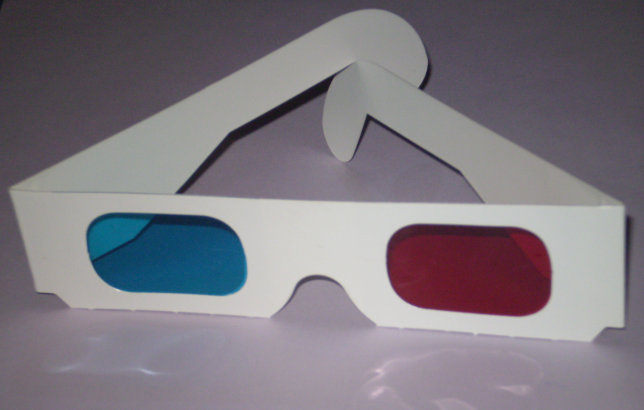
Paper anaglyph filters produce an acceptable image at low cost and are suitable for inclusion in magazines.
Complementary color anaglyphs employ one of a pair of complementary color filters for each eye. The most common color filters used are red and cyan. Employing tristimulus theory, the eye is sensitive to three primary colors, red, green, and blue. The red filter admits only red, while the cyan filter blocks red, passing blue and green (the combination of blue and green is perceived as cyan). If a paper viewer containing red and cyan filters is folded so that light passes through both, the image will appear black. Another recently introduced form employs blue and yellow filters. (Yellow is the color perceived when both red and green light passes through the filter.)
Anaglyph images have seen a recent resurgence because of the presentation of images on the Internet. Where traditionally, this has been a largely black & white format, recent digital camera and processing advances have brought very acceptable color images to the internet and DVD field. With the online availability of low cost paper glasses with improved red-cyan filters, and plastic framed glasses of increasing quality, the field of 3D imaging is growing quickly. Scientific images where depth perception is useful include, for instance, the presentation of complex multi-dimensional data sets and stereographic images of the surface of Mars. With the recent release of 3D DVDs, they are more commonly being used for entertainment. Anaglyph images are much easier to view than either parallel sighting or crossed eye stereograms, although these types do offer more bright and accurate color rendering, most particularly in the red component, which is commonly muted or desaturated with even the best color anaglyphs. A compensating technique, commonly known as Anachrome, uses a slightly more transparent cyan filter in the patented glasses associated with the technique. Processing reconfigures the typical anaglyph image to have less parallax to obtain a more useful image when viewed without filters.

Piero della Francesca, Ideal City in an Anaglyph version ![]() 3D red cyan glasses are recommended to view this image correctly.
3D red cyan glasses are recommended to view this image correctly.
右瞧
Polarized 3D system
A polarized 3D system uses polarization glasses to create the illusion of three-dimensional images by restricting the light that reaches each eye (an example of stereoscopy).
To present stereoscopic images and films, two images are projected superimposed onto the same screen or display through different polarizing filters. The viewer wears low-cost eyeglasses which contain a pair of different polarizing filters. As each filter passes only that light which is similarly polarized and blocks the light polarized in the opposite direction, each eye sees a different image. This is used to produce a three-dimensional effect by projecting the same scene into both eyes, but depicted from slightly different perspectives. Multiple people can view the stereoscopic images at the same time.
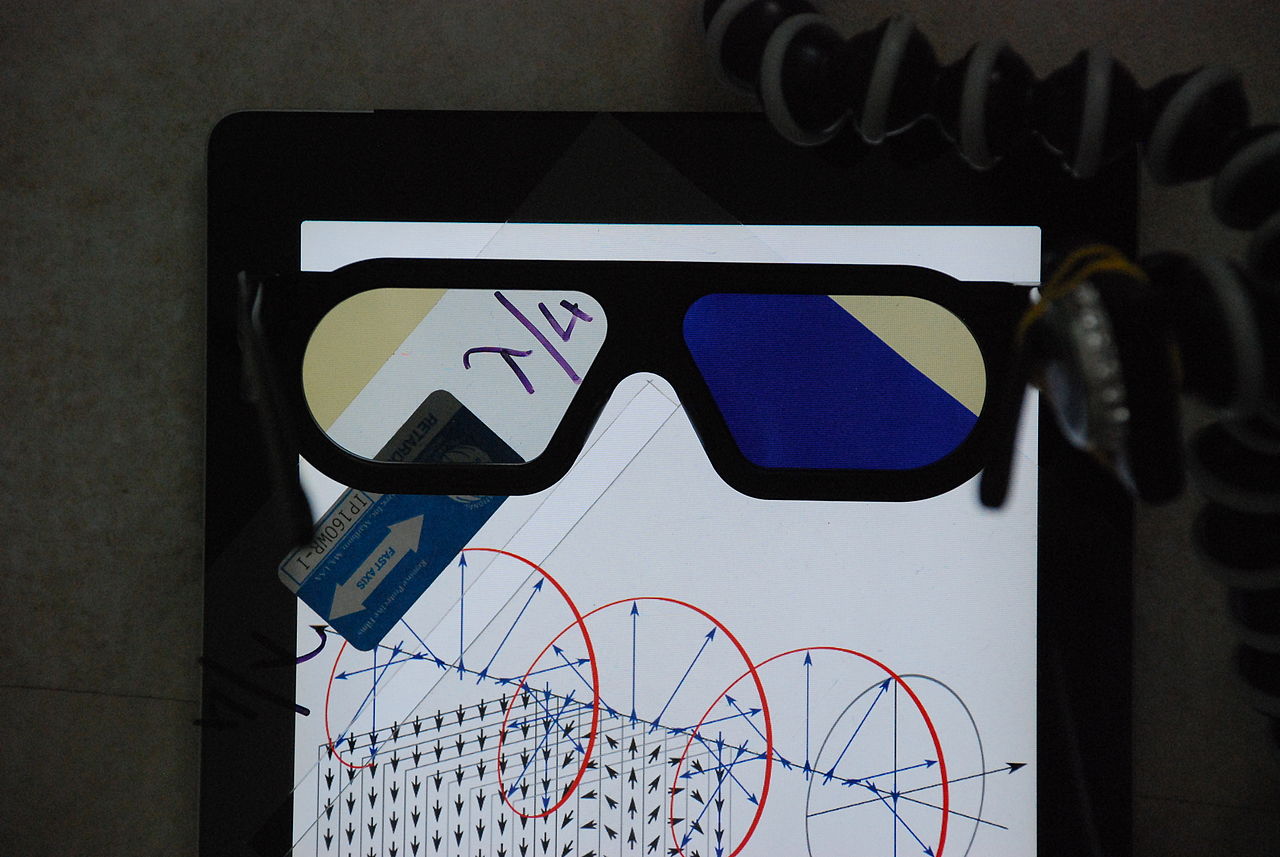
Circularly polarized 3D glasses in front of an LCD tablet with a quarter-wave retarder on top of it; the λ/4 plate at 45° produces a definite handedness, which is transmitted by the left filter but blocked by the right filter.
System construction and examples
Polarized light reflected from an ordinary motion picture screen typically loses most of its polarization, but the loss is negligible if a silver screen or aluminized screen is used. This means that a pair of aligned DLP projectors, some polarizing filters, a silver screen, and a computer with a dual-head graphics card can be used to form a relatively high-cost (over US$10,000 in 2010) system for displaying stereoscopic 3D data simultaneously to a group of people wearing polarized glasses.[citation needed]
In the case of RealD a circularly polarizing liquid crystal filter which can switch polarity 144 times per second[2] is placed in front of the projector lens. Only one projector is needed, as the left and right eye images are displayed alternately. Sony features a new system called RealD XLS, which shows both circularly polarized images simultaneously: A single 4K projector displays two 2K images one above the other, a special lens attachment polarizes and projects the images on top of each other.[3]
Optical attachments can be added to traditional 35 mm projectors to adapt them for projecting film in the “over-and-under” format, in which each pair of images is stacked within one frame of film. The two images are projected through different polarizers and superimposed on the screen. This is a very cost-effective way to convert a theater for 3-D as all that is needed are the attachments and a non-depolarizing screen surface, rather than a conversion to digital 3-D projection. Thomson Technicolor currently produces an adapter of this type.[4]
When stereo images are to be presented to a single user, it is practical to construct an image combiner, using partially silvered mirrors and two image screens at right angles to one another. One image is seen directly through the angled mirror whilst the other is seen as a reflection. Polarized filters are attached to the image screens and appropriately angled filters are worn as glasses. A similar technique uses a single screen with an inverted upper image, viewed in a horizontal partial reflector, with an upright image presented below the reflector, again with appropriate polarizers.[original research?]
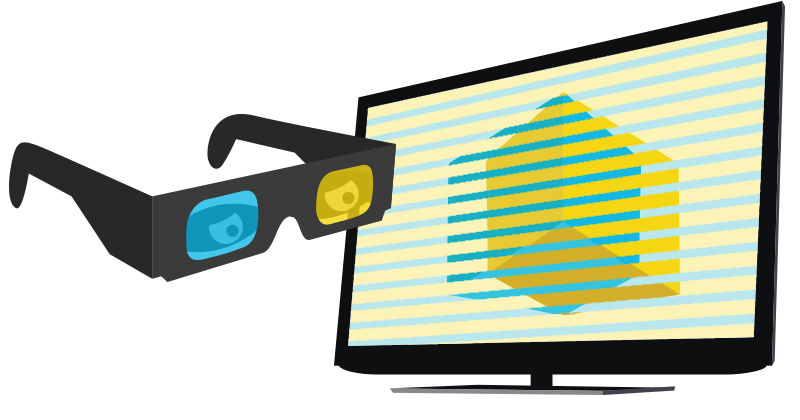
Functional principle of polarized 3D systems
※ 註
SVEN: Stereoscopic Visualization ENvironment
In the Math, Computer Science, and Physics Department at Wartburg College, we have been developing techniques for stereoscopic visualization/virtual reality using readily available, commodity hardware and highly-accessible software. Our goal is to make this technology feasible in virtually any classroom setting. This page contains links to some materials related to the project. Comments or questions should be directed to John Zelle or Charles Figura.
Overview Materials
- Paper:
 Simple, Low-Cost Stereographics: VR for Everyone
Simple, Low-Cost Stereographics: VR for Everyone - Paper accepted for SIGCSE 2004. This paper is a general HOWTO for stereographic visualization in the classroom. It explains both the hardware and software that we are using for 3D visualizations.
- Presentation: Simple, Low-Cost Stereographics: VR for Everyone
- This is the HTML version of the presentation of the above paper at SIGCSE 2004. Sigcse04-slides.pdf is a PDF version of the slides, and sigcse04-handout.pdf contains these slides 4 to a page.
- Presentation: Classroom Virtual Reality: Simple, Affordable Stereoscopic Visualization
- HTML version of presentation at American Association of Physics Teachers, Winter 2004. This presentation includes a basic outline of our approach and some example applications in Physics.
都是『雙眼』所作『事』耶?『單眼』將如何乎??
傳說有一天偶見『顫抖』的『藍日』︰
Wiggle stereoscopy
Wiggle stereoscopy is an example of stereoscopy in which left and right images of a stereogram are animated. This technique is also called wiggle 3-D or wobble 3-D, sometimes also Piku-Piku (Japanese for “twitching”).[1]
The sense of depth from such images is due to parallax and to changes to the occlusion of background objects. In contrast to other stereo display techniques, the same image is presented to both eyes. Animation can be done in a web browser with an animated GIF image, Flash animation, or JavaScript program.
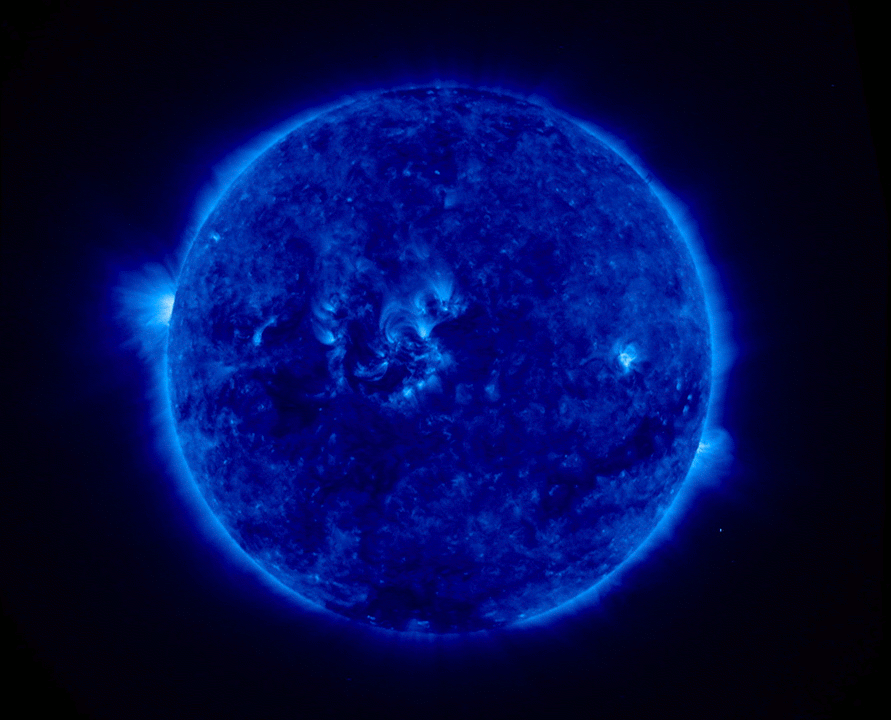
A wiggle stereogram of the Sun alternating between left and right eye images taken by the NASA‘s STEREO solar observation mission
Kinetic depth effect
In visual perception, the kinetic depth effect refers to the phenomenon whereby the three-dimensional structural form of an object can be perceived when the object is moving. In the absence of other visual depth cues, this might be the only perception mechanism available to infer the object’s shape. Being able to identify a structure from a motion stimulus through the human visual system was shown by Wallach and O’Connell in the 1950s through their experiments.[1]
For example, if a shadow is cast onto a screen by a rotating wire shape, a viewer can readily perceive the shape of the structure behind the screen from the motion and deformation of the shadow.
There are two propositions as to how three-dimensional images are perceived. The experience of three-dimensional images can be caused by differences in the pattern of stimulation on the retina, in comparison to two-dimensional images. Gestalt psychologists hold the view that rules of organization must exist in accordance to the retinal projections of three-dimensional forms which happen to form three-dimensional percepts. Most retinal images of two-dimensional forms lead to two-dimensional forms in experience as well. The other deduction is related to previous experience. Unfortunately, this assumption does not explain how past experience influences perception of images.[2]
In order to model the calculation of depth values from relative movement, many efforts have been made to infer these values using other information like geometry and measurements of objects and their positions.[3] This is related to the extraction of structure from motion in computer vision. In addition, an individual’s ability to realize the kinetic depth effect conclusively shows that the visual system can independently figure the structure from motion problem.[4]
As with other depth cues, the kinetic depth effect is almost always produced in combination with other effects, most notably the motion parallax effect. For instance, the rotating circles illusion[5] and the rotating dots visualization[6] (which is similar in principle to the projected wireframe demonstration mentioned above) rely strongly on the previous knowledge that objects (or parts thereof) further from the observer appear to move more slowly than those that are closer.
The kinetic depth effect can manifest independently, however, even when motion parallax is not present. An example of such a situation is the art installment “The Analysis of Beauty”,[7] by the Disinformation project, created as a tribute to William Hogarth‘s concept of the Serpentine Line (which was presented in his homonymous book).
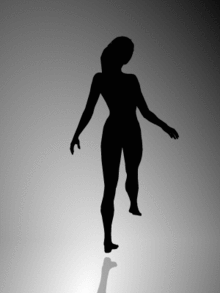
The Spinning Dancer is a kinetic, bistable optical illusion resembling a pirouetting female dancer. Some observers initially see the figure as spinning clockwise and some anticlockwise. Additionally, some may see the figure suddenly spin in the opposite direction. The illusion derives from an inherent ambiguity from the lack of visual cues for depth. There are other optical illusions that originate from the same or similar kind of visual ambiguity, such as the Necker cube. If you focus on one part of her body, such as her foot and the shadow, it is possible to switch back and forth by focusing on the opposite motion that she is currently performing with her foot. When trying to switch from clockwise to counterclockwise wise I have found focusing on the shadow of her foot for a couple seconds allows you to see the opposite direction. And in some cases when able to switch back and forth with ease it looks like she is waving her leg back and forth and has lost the spinning effect entirely. .
